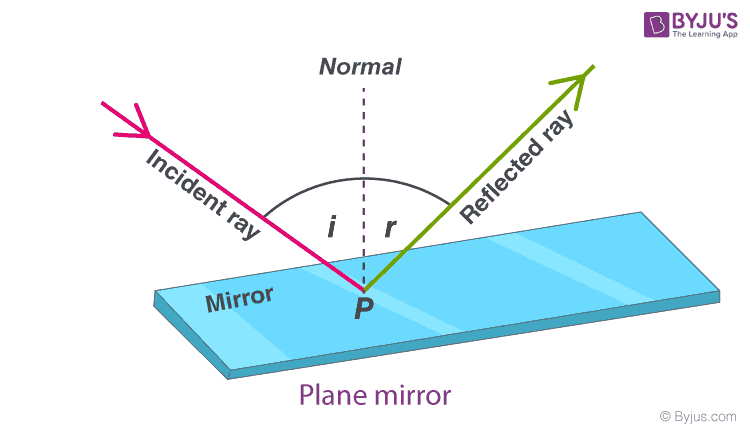
Consider reflection of a light ray A P at the point of incidence P.Suppose a light from source A reflects from a surface to destination B, the shortest distance between A and B is a straight line.According to the principle, the light follows the shortest path or path that requires the least time of travel.JEE Main 2022 Question Paper Live Discussion.Difference Between Selling And Marketing.TS Grewal Solutions Class 11 Accountancy.TS Grewal Solutions Class 12 Accountancy.CBSE Previous Year Question Papers Class 12.CBSE Previous Year Question Papers Class 10.NCERT Solutions For Class 6 Social Science.NCERT Solutions for Class 7 Social Science.NCERT Solutions for Class 8 Social Science.(eds.) Computer Vision – A Reference Guide. “Light Scattering by Inhomogeneous Media”. Theory of Reflection, of Electromagnetic and Particle Waves. If many parallel rays strike a mirror surface, only a viewer at a particular angle sees the reflection. The law of reflection governs how our eyes see images.

This finds use in mirrors, lenses, cameras, and telescopes. The law of reflection allows the prediction of the path light follows when it strikes a shiny surface. If you like, trace the path of the light on the paper using a pencil and measure the angles with a protractor. Observe the angle of the reflected beam on the paper.

If you’re using a laser, avoid looking at the beam. A small laser pointer works best because it has a tight beam, but you can use any directional light. You need a mirror, a light source, and a sheet of paper. See It for YourselfĬonfirming the law of reflection is easy. So, subtract the angle of reflection from the normal (90°): 90 – 36 = 54°. However, the question asks about the angle between the reflected ray and the surface. Knowing the angle of incidence is 36°, you also know the angle of reflection is 36°. So, the angle of reflection is 60°.Īs another example, find the angle between a reflected ray and the surface if light strikes a mirror with an angle of incidence of 36°. According to the law of reflection, both the incident and reflected angle are the same, with respect to the normal. Since the normal is 90°, the incident angle is 90 – 30 = 60°. Remember, this is the angle between the ray and the normal (not the ray and the surface). To answer the question, first find the angle of incidence. Law of Reflection Example Problemsįor example, what is the angle of reflection if an incident ray strikes a plane mirror with an angle of 30° to the mirror surface? While the law of reflection holds true for diffuse reflection, the rough surface produces different combinations of incident/reflected angles, depending on position. You’ll never see reflected light bounce off a surface on the same side of the perpendicular plane as the incident ray. The incident ray and reflected ray are on opposite sides of the normal.Changing the direction of the incident ray changes this plane. The incident ray, normal, and reflected ray all lie in the same plane.Another name for the normal is the perpendicular line, with respect to the surface. The angle between the incident ray and the normal is the same as the angle between the reflected ray and the normal.The law of reflection describes the type of reflection you see from a mirror. Simple Statement of the Law of Reflection The law of reflection states that the angle of reflection is the same as the angle of incidence. The law of reflection is derived from the Fresnel equations. In contrast, diffuse reflection occurs from an irregular surface. This is specular reflection or regular reflection.

The law describes the behavior of light reflecting off of a very smooth surface. The law of reflection states that the angles of an incident ray and reflected ray are the same as each other and are in the same plane as the normal. The law of reflection states that the angles of an incident ray and reflected ray are the same and the incident ray, reflected ray, and normal are all in the same plane. This entry was posted on Maby Anne Helmenstine (updated on March 28, 2022)


 0 kommentar(er)
0 kommentar(er)
